Are you looking for an easy-to-care-for houseplant that adds a touch of green to your home? Look no further than how to care for pothos plants!
Pothos plants are one of the most popular and low-maintenance houseplants, making them an excellent choice for beginners and seasoned plant enthusiasts alike. Known for their vibrant green, heart-shaped leaves and trailing vines, these plants thrive in a variety of environments and require minimal effort to keep them healthy.
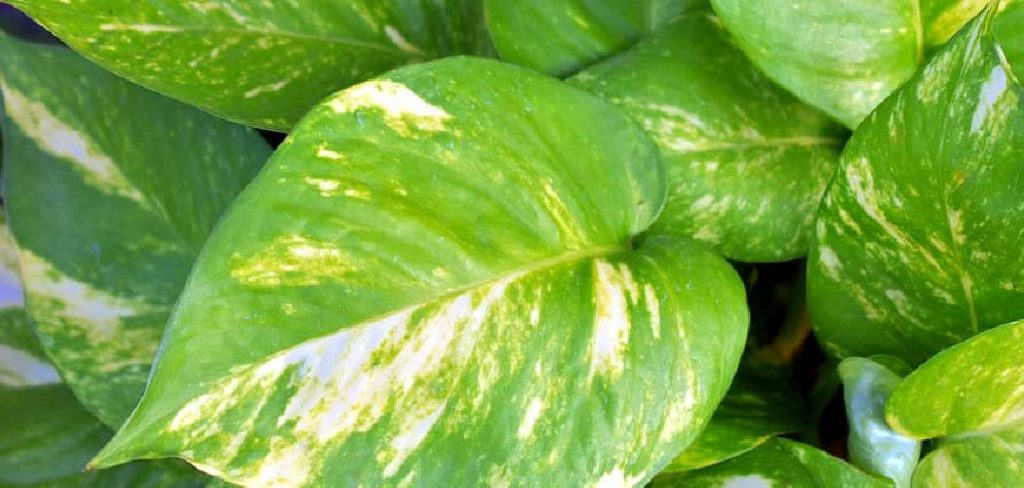
Whether you’re looking to add a touch of greenery to your home or create a lush indoor jungle, learning the basics of pothos plant care will help ensure your plants remain vibrant and thriving year-round. Let’s dive into some key factors to consider when caring for your pothos plants.
What are the Benefits of Having Pothos Plants in Your Home?
There are numerous benefits to having pothos plants in your home, making them a popular choice among plant enthusiasts. One of the main benefits is their ability to purify the air by removing toxins such as formaldehyde, benzene, and xylene. These harmful chemicals can be found in everyday household items like cleaning products, furniture, and even some beauty products.
By having pothos plants in your home, you can improve the overall air quality and create a healthier living space.
What Will You Need?
Before you rush out to purchase a pothos plant for your home, it’s important to gather all the necessary materials and information. Here are some things to consider before buying a pothos plant:
- Potting Soil: Pothos plants require well-draining soil, so make sure to choose a potting mix specifically made for indoor plants.
- Pot: You will need a pot that is at least 6 inches in diameter with drainage holes at the bottom. This will allow excess water to drain out and prevent root rot.
- Watering Can: It’s important to keep your pothos plant hydrated, but overwatering can be harmful. A watering can with a long spout can make it easier to control the amount of water you give your plant.
- Fertilizer: Pothos plants do not require frequent fertilizing, but a balanced liquid fertilizer once a month during the growing season can help promote healthy growth.
- Lighting: Pothos plants can thrive in a wide range of lighting conditions, from low light to bright indirect light. Before purchasing, consider where you plan to place your pothos and choose one that will be suitable for that location.
10 Easy Steps on How to Care for Pothos Plants
Step 1. Choose the Right Location:
Selecting the ideal spot for your pothos plant is crucial for its growth and overall health. Pothos plants are highly adaptable, but they thrive best in bright, indirect light. A location near a window with filtered sunlight is ideal, as direct sunlight can scorch the leaves. While pothos can tolerate low-light conditions, prolonged exposure to very dim areas might slow their growth and cause leaves to lose their vibrant variegation.
Additionally, avoid placing the plant near cold drafts, such as air conditioning vents or frequently opened exterior doors, as temperature fluctuations can stress the plant. Take the time to assess your space and determine where your pothos will both aesthetically complement the environment and receive the appropriate light conditions for healthy development.
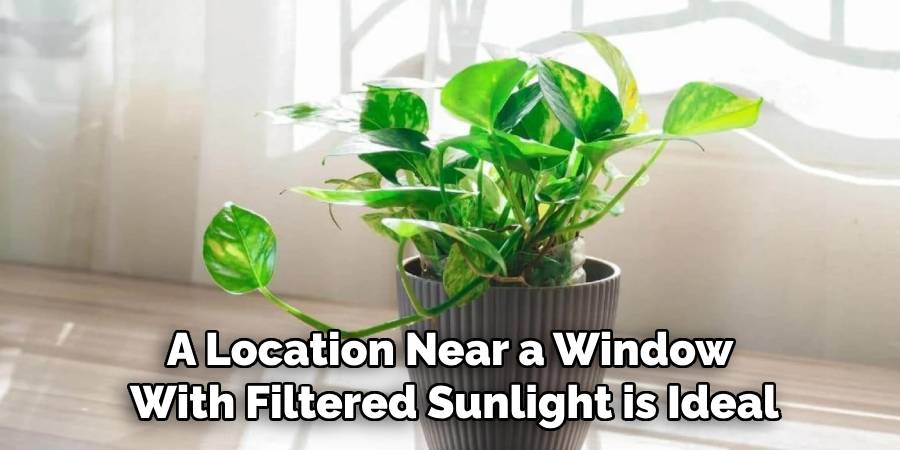
Step 2. Select a Suitable Pot:
When choosing a pot for your pothos, opt for one with proper drainage holes to prevent water from pooling at the bottom and causing root rot. Select a pot that is slightly larger than the current root ball of the plant to allow room for growth, but avoid going too large, as excess soil can retain moisture and lead to overwatering issues. Additionally, consider the material of the pot—terracotta pots are breathable and help with moisture regulation, while plastic pots can retain more humidity, which might be suitable for drier environments. Ensure the pot matches both your plant’s needs and your home’s aesthetic for a harmonious look.
Step 3. Water Properly:
When it comes to watering, understanding your plant’s specific needs is crucial. Overwatering is one of the most common mistakes and can lead to root rot, while underwatering can cause the plant to wither. Check the soil’s moisture level before watering by inserting your finger about an inch deep—if it’s dry, it’s time to water. Use room-temperature water and pour it evenly over the soil until it drains from the bottom of the pot. Be sure to empty any excess water from the saucer to prevent the roots from sitting in standing water. Remember, consistency is key, so establish a watering routine suited to your plant’s requirements and environment.
Step 4. Use Well-Draining Soil:
Using well-draining soil is crucial for the health of your plant’s roots and overall growth. Well-draining soil prevents water from pooling at the bottom of the pot, which can lead to root rot and other fungal issues. To create a well-draining mix, combine standard potting soil with materials like perlite, sand, or orchid bark. These elements improve aeration and allow excess water to escape more efficiently. When repotting, ensure the pot also has drainage holes to complement the soil mix. Tailor the soil composition to your plant type, as some species, like succulents and cacti, thrive in particularly fast-draining substrates.
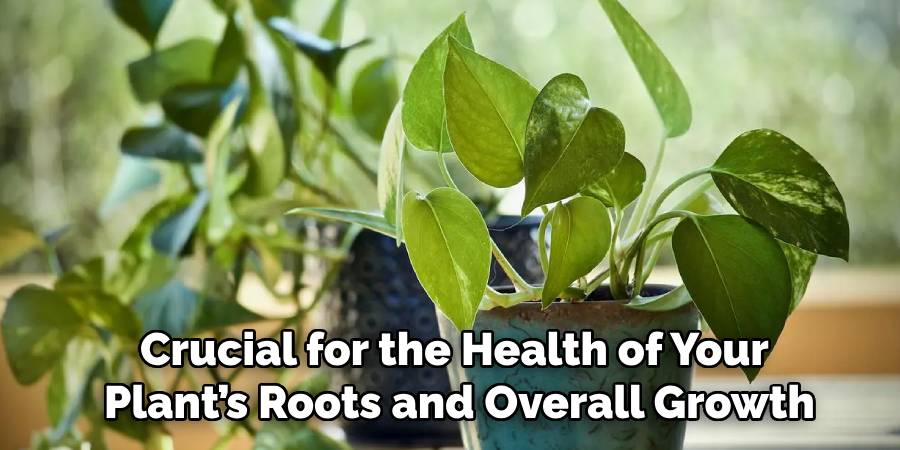
Step 5. Fertilize Occasionally:
Fertilizing your plants periodically can promote healthy growth and vibrant foliage. Use a balanced, water-soluble fertilizer and follow the manufacturer’s instructions for dilution and application frequency. Over-fertilizing can harm your plant, so it’s important to err on the side of caution. Generally, most houseplants benefit from fertilization once a month during the growing season, while reducing or stopping altogether during the dormant winter months. Tailor your fertilization routine to meet the specific needs of your plant species for the best results.
Step 6. Prune as Needed:
Pruning is essential to maintain the health and appearance of your plant. Remove any dead, yellowing, or damaged leaves regularly, as these can drain energy from the plant and encourage pests or disease. Use clean, sharp scissors or pruning shears to make precise cuts and minimize damage to the plant. Additionally, trimming back overgrown stems promotes a fuller, bushier shape and encourages new growth. Always research the pruning requirements of your specific plant to ensure you’re supporting its natural growth pattern.
Step 7. Consider Humidity:
Most houseplants thrive in environments with moderate to high humidity, as many originate from tropical regions. Low humidity can lead to issues such as browning leaf edges or slowed growth. To maintain adequate humidity levels, you can mist your plants regularly, use a humidifier, or place a tray of water with pebbles near the plant to create a more humid microenvironment. Grouping plants can also naturally increase the humidity around them. Be mindful of your plant’s specific needs, as some species may prefer drier conditions, and adjust accordingly to ensure their health and vitality.
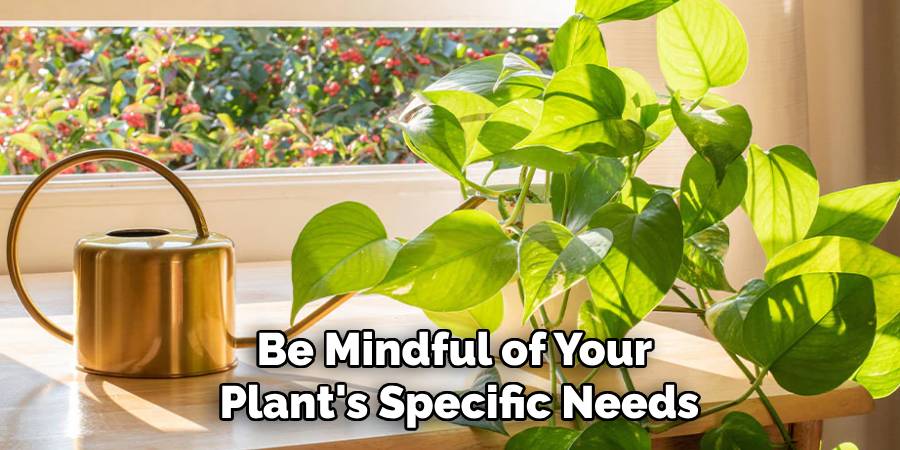
Step 8. Keep Pests Away:
Pests can quickly become a nuisance and harm your plants if not addressed promptly. Regularly inspect your plants for signs of infestation, such as discolored leaves, holes, webbing, or the presence of tiny insects. Common household plant pests include spider mites, aphids, and mealybugs. To keep pests away, maintain proper plant hygiene by removing dead leaves, cleaning the leaves with a damp cloth, and avoiding overwatering, which can attract pests. If you notice pests, consider using natural remedies like neem oil or insecticidal soap to eliminate them. For severe infestations, you may need to isolate the affected plant and take more targeted action to protect the rest of your collection.
Step 9. Repot When Necessary:
Repotting your plant is essential to ensure its continued growth and health. Over time, plants can outgrow their containers, leading to root-bound conditions where the roots become tangled and restricted. To determine if repotting is necessary, check for roots poking out of drainage holes or visible on the soil’s surface. Choose a slightly larger pot with proper drainage holes and use fresh potting soil appropriate for your plant’s needs. Gently remove the plant from its current container, loosen the roots, and place it in the new pot, ensuring it sits at the same depth as before.
Step 10. Support Trailing Growth:
For plants with trailing or vining growth habits, providing proper support is essential to encourage healthy development and prevent damage. Use stakes, trellises, or hanging baskets based on the plant’s natural growth pattern. Gently guide the vines or stems onto the support structure, securing them with soft ties or clips to avoid constriction. Regularly check and adjust the supports as the plant grows to ensure the stems are not overcrowded or strained.
By following these simple tips, you can provide the necessary support for your plants and help them thrive in their environment.
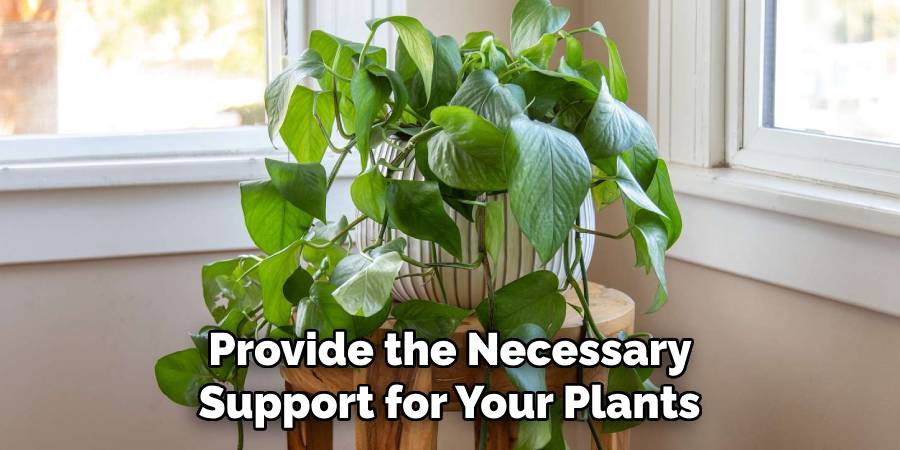
Conclusion
Pothos plants are resilient and easy-to-care-for houseplants, making them an excellent choice for both beginners and experienced plant enthusiasts.
By providing proper lighting, maintaining a consistent watering schedule, ensuring adequate drainage, and offering appropriate support for their growth, you can help your pothos thrive. Regular pruning and occasional fertilization will also promote healthy development and lush foliage.
Hopefully, the article on how to care for pothos plants has given you a better understanding of these beautiful and versatile houseplants.
About
Jennifer Branett is a distinguished figure in the world of Garden design, with a decade of expertise creating innovative and sustainable indoor solutions. His professional focus lies in merging traditional craftsmanship with modern manufacturing techniques, fostering designs that are both practical and environmentally conscious. As the author of garden, Jennifer delves into the art and science of garden-fix, inspiring artisans and industry professionals alike.
Education RMIT University
(Melbourne, Australia) Associate Degree in Design (Jennifer Branett) Focus on sustainable design, industry-driven projects, and practical craftsmanship. Gained hands-on experience with traditional and digital manufacturing tools, such as CAD and CNC software.
Nottingham Trent University
(United Kingdom) Bachelor’s in Garden and Product Design (Honors) Specialized in product design with a focus on blending creativity with production techniques. Participated in industry projects, working with companies like John Lewis and Vitsoe to gain real-world insights.Publications and Impact
In indoor, Jennifer Branett his insights on Garden design processes, materials, and strategies for efficient production. His writing bridges the gap between artisan knowledge and modern industry needs, making it a must-read for both budding designers and seasoned professionals.
